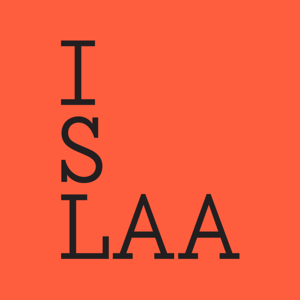March 3–June 3, 2022
142 Franklin Street
New York, New York 10013
United States
The Institute for Studies on Latin American Art (ISLAA) is delighted to announce the opening of Born of Informalismo: Marta Minujín and the Nascent Body of Performance, curated by Michaëla de Lacaze Mohrmann, on March 3. The third in a series of exhibitions on Latin American modernism and its legacies, this show examines the early work of trailblazing Argentine artist Marta Minujín (b. 1943), tracing her trajectory from informalist painting and sculpture to performance.
Presenting three of Minujín’s informalist paintings alongside exhibition catalogues, photographs of sculptures, and documentation of her 1963 happening La destrucción, this exhibition highlights Informalismo’s importance as a key conduit for Argentine experimental art of the 1960s. Whereas many accounts of the movement have focused on the production of a small contingent of male artists, this show encourages a reconsideration of Informalismo’s heterogeneity, transnational context, and sociopolitical framework through Minujín’s work, paving the way for additional research into its role in twentieth-century Latin American art.
A form of expressive abstraction characterized by the gestural application of paint, informalist painting emerged in Europe in the late 1940s and gradually flourished around the globe. By 1956, it had taken hold in Buenos Aires, where its proponents produced relief-like paintings that incorporated a somber color palette and the extra-artistic materials of everyday life, from rags to rusted cans. Evocative of the harsh realities of daily life and a general postwar malaise, Argentine Informalismo embraced ugliness, spontaneity, violence, and irrationality in a decisive break with the mathematically precise logic of the country’s preceding avant-gardes.
For Minujín, who adopted Informalismo’s lexicon of earthy colors, found items, and textural impastos to convey the passage of time, the style offered a crucial platform for testing out ideas regarding the body and action in art. Paintings such as Gran mancha (ca. 1959), Mancha (1960), and Homenaje a Greco (1961), composed of thick layers of smeared and speckled oils, evince the effects of aging through their cracked skin-like surfaces. Minujín’s subsequent informalist sculptures of the early 1960s marked a transition into three dimensions by constructing discarded mattresses and cardboard into fragile anthropomorphic and embodied forms.
These experiments in painting and sculpture coincided with Minujín’s early performances, setting the stage for her first full-scale happening, La destrucción—a pivotal piece, produced in Paris, in which she destroyed her sculptures in a ceremonial conflagration. Minujín abandoned the informalist idiom in 1963, going on to produce groundbreaking work in installation, performance, and time-based media—from La menesunda to Simultaneidad en simultaneidad—in the following years.
ISLAA Exhibition Talks
Las Informalistas: Women of Latin American Informalist Abstraction
Featuring presentations by Mariola V. Alvarez, Sean Nesselrode Moncada, and Gabriela Rangel
May 3, 6pm EDT, register.
In conjunction with this exhibition, ISLAA will host a live online panel on Informalismo in Latin America that will consider the contributions of women artists and the movement’s role in countries such as Argentina, Brazil, and Venezuela. Presentations by art historians Mariola V. Alvarez, Sean Nesselrode Moncada, and Gabriela Rangel will be followed by a conversation moderated by Michaëla de Lacaze Mohrmann.
As a complement to this live public program, ISLAA will also publish a pre-recorded video lecture on Marta Minujín’s informalist work by Michaëla de Lacaze Mohrmann. Please visit here for more information.
About ISLAA
The Institute for Studies on Latin American Art (ISLAA) advances scholarship and public engagement with art from Latin America through its program of exhibitions, publications, lectures, and partnerships with universities and art institutions.




